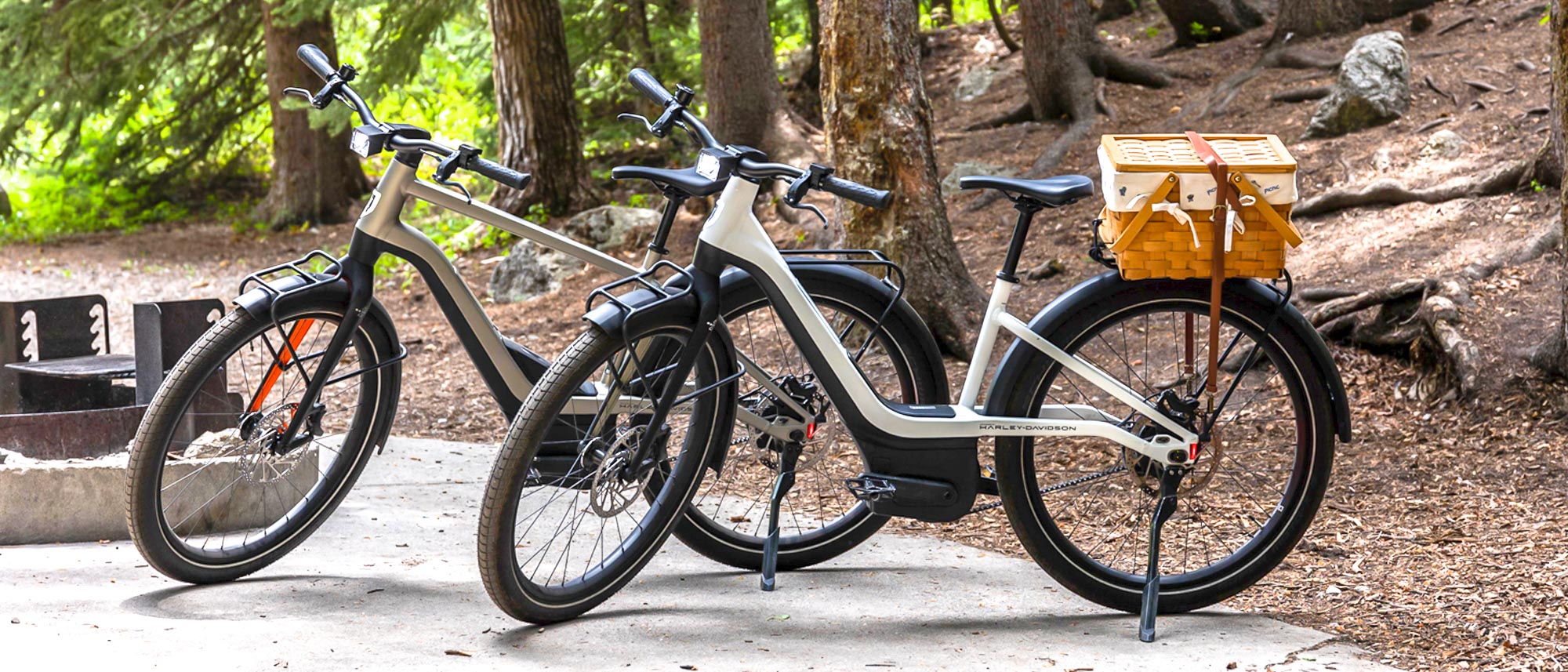Tom's Guide Verdict
The Serial 1 Rush/Cty powered by Harley-Davidson delivers a solid, but sometimes too-harsh ride for urban riders.
Pros
- +
Seamless design
- +
Automatic gearing
- +
Trouble-free belt drive
Cons
- -
High price
- -
Difficult to change cadence
Why you can trust Tom's Guide
Price: $4,999
Battery: 706 Wh
Max estimated range: 25-115 miles
Max assisted speed: 20 mph
Motor: Brose mid-drive, 90 Nm torque
Gearing: Enviolo Automatiq constantly variable transmission; Gates belt drive
Wheel diameter: 27.5 inches
Weight: 59 lbs. (large frame)
It ain't a hog, but that's a good thing. The Harley-Davidson-backed Serial 1 Rush/Cty ebike is a more civilized two-wheeler than you'd expect from the maker of iconic American motorcycles.
Started in 2018 and later spun out of the Milwaukee motorcycle maker, the ebike company is officially known as "Serial 1 Powered by Harley-Davidson," combining the imprimatur of the 118-year-old brand (plus its design and research expertise) with the sheen of an emobility startup. The company's Serial 1 Rush/Cty model is, as the name suggests, an urban commuter designed to be as maintenance free as possible and offering sophisticated technology, such as an automatic transmission/gearing and design flourishes like a built-in glove compartment. And, like its motorcycle parent, the Serial 1 is also a luxury brand now vying for space in a competitive ebike market. But, as this Serial 1 Rush/Cty review will show, the marriage of old and new isn’t always perfect.
Serial 1 Rush/Cty review: Price and availability
The Serial 1 Rush/Cty is a premium bike and is priced accordingly at $4,999. With a constantly variable transmission, the pedal-assist-only bike has a top-speed assist of 20 mph (faster than that and you're pedaling on your own). There's also a Rush/Cty Speed version that goes up to 28 mph for a whopping $5,599, but it's also pedal-assist only, no throttle included.
The more basic Mosh City Serial 1 models start at $3,799 but comes fenderless and rackless. It also has a smaller battery, reducing its range by about 20 percent, and the Mosh City uses a single speed drive rather than the continuous variable transmission of the Rush/Cty models. (There's also a retro Mosh Tribute model with white tires and an old-timey spring seat, but it is currently unavailable.)
Serial 1 Rush/Cty review: Design
In terms of heft and size, the Serial 1 is a middleweight. It's not as svelte as commuters like the 45-pound Charge Bikes City but it's not as beefy as off-roaders like the 65-pound Biktrix Stunner X.

The Serial 1 has 2.4-inch wide street tires, for example, which are wider than typical tires on commuting bikes but more refined than the knobby fat tires on cross-country bikes. It helps give the Serial 1 a big city feel, along with the in-tube battery and integrated front and rear fenders and cargo rack.
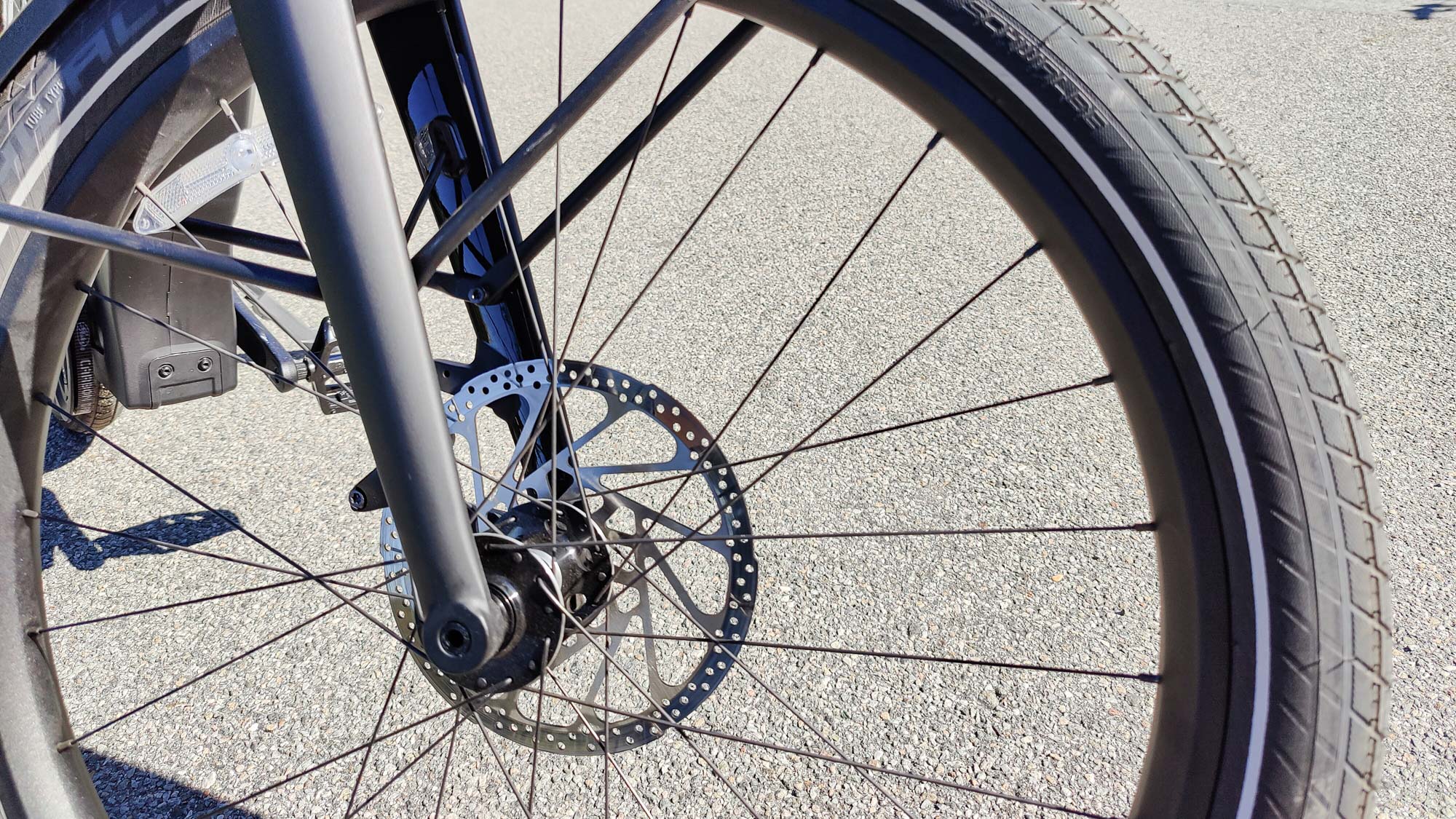
The Serial 1 Rush/Cty is also wider and more muscular than a typical commuter. The pedals, for example, sit about an inch farther apart than those on most models, giving it a wider pedaling stance. The aluminum bike's downtube is also wider, which allows it to accommodate a lockable glove compartment that is big enough to hold a small water bottle. All the wiring is routed inside the frame, keeping things neat and tidy, and an excellent LED headlamp is included, as well as a tail light. The rear brake light illuminates not only when you hit the brakes but also if you start slowing down, a nice safety feature.
Get instant access to breaking news, the hottest reviews, great deals and helpful tips.

The Rush/Cty uses a mid-mounted Brose TF MAG motor that seamlessly delivers 90Nm/66 ft. lb. of torque. It's a pedal assist -only bike, so there's no throttle for full-on electric operation.

You also can't shift gears; it's an automatic and is set to a fixed cadence that you can change in an app that works with the Enviolo Automatiq transmission, an electronically controlled CVT (constantly variable transmission) rear hub design. It's set to 75 rpm by default, but you can set it to a lower rpm to increase the resistance. The whole thing is connected using a carbon-fiber belt, so it doesn't require the lubrication and maintenance that a traditional chain incurs.
Serial 1 Rush/Cty review: Performance
Over hill and dale, the Serial 1 Rush/Cty bike proved to be an extremely stable ride, no doubt aided and abetted by Schwalbe Super Moto-X 27.5-inch tires and the very low center of gravity created by the Brose motor being situated below the downtube and crankshaft. We found the Rush/Cty, in spite of its full size (we tested the large model) was responsive and easy to handle with a comfortable upright riding position and wide-grip handle bars.
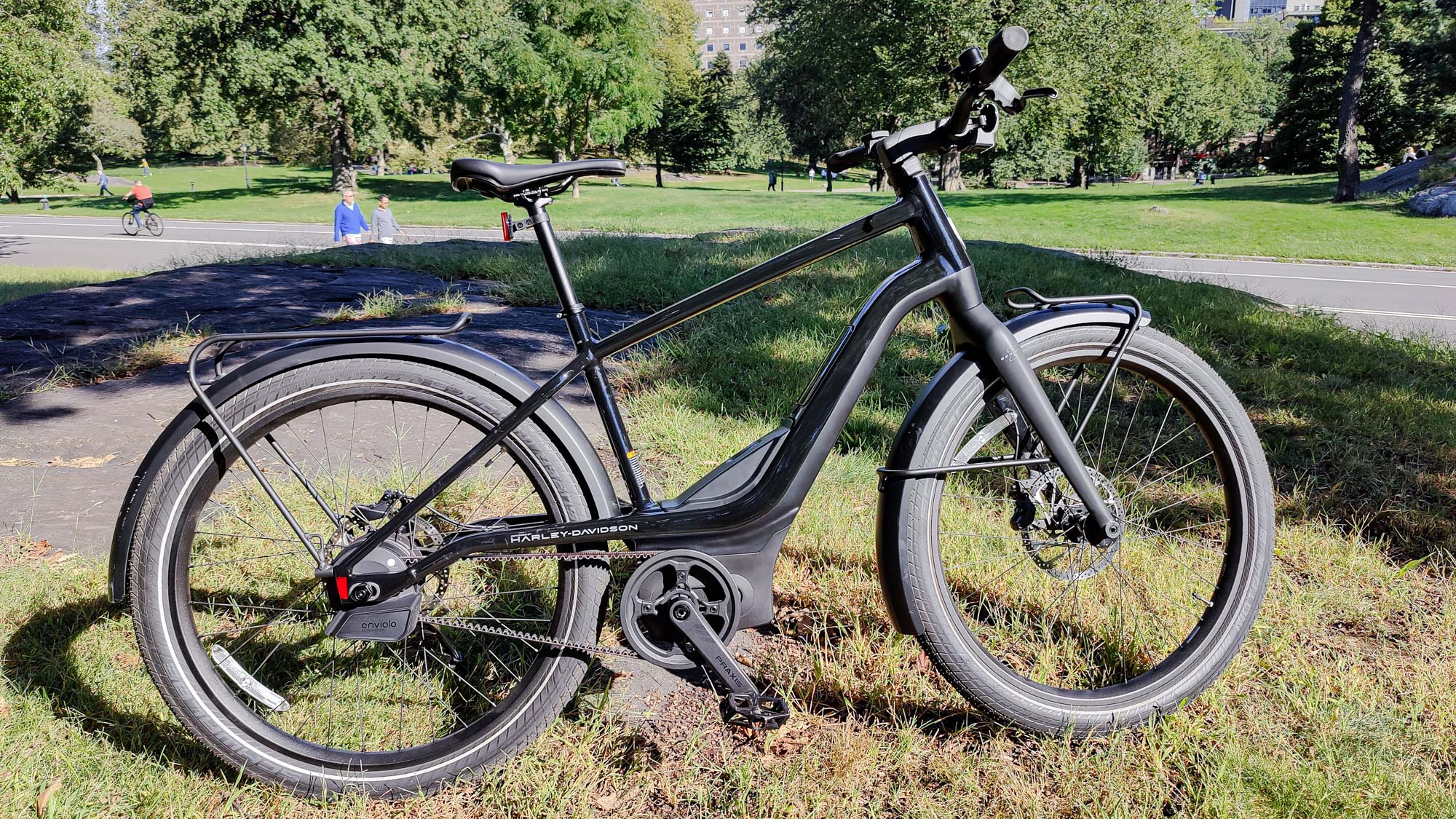
Quick swerves to avoid potholes didn't disturb its balance, and the Rush/Cty stayed steady under panic braking; the rear wheel stepped out a bit but it was completely manageable, making it a perfect bike for rough and tumble urban streets. While the electric assist cuts out at 20 mph, we found the bike stayed steady and true heading down hills at over 24 mph, and on a blustery day, it remained unflustered by wind gusts.

On the downside, some riders will find the Serial 1 delivers a rather harsh ride. At speed, severe bumps can jolt the handlebars out of your hands if you're not attentive. A front fork with suspension would go a long way to remedying the situation, as would a compression post under the otherwise comfortable seat.
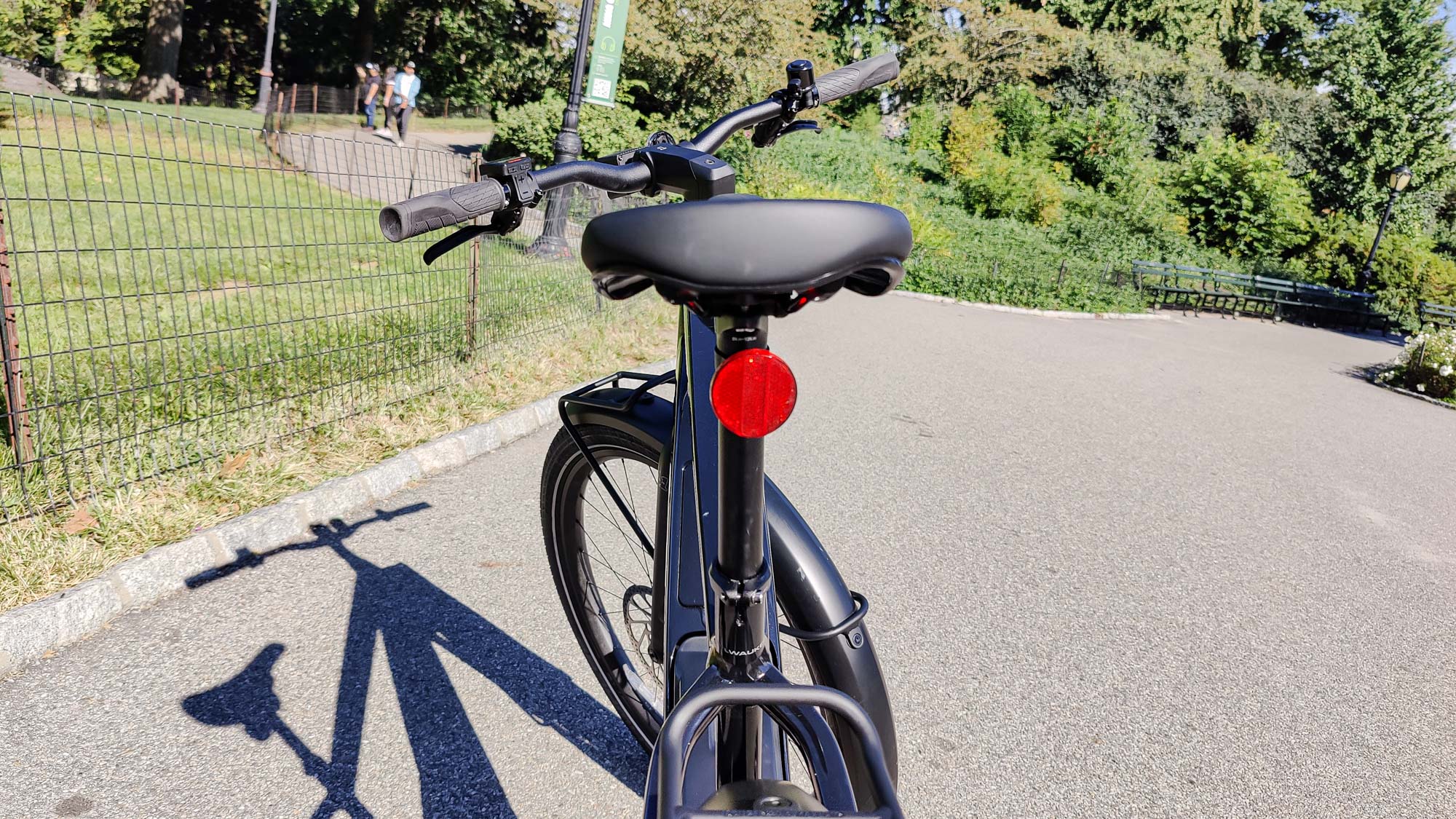
While the majority of ebike riders will probably find the automatic transmission and lack of gear a godsend, we often found it frustrating not being able to shift on the fly. For example, the electric assist cuts out when you hit 20 mph so when going downhill it can become harder to pedal when you exceed that speed. So — counterintuitively — you may find you work harder doing downhill than you do going uphill. Consequently, we often found we wanted to change to a cadence with more resistance, but you can only do this by stopping, booting up the Enviolo smartphone app and lowering the rpm (we found 60 rpm was more our speed), and then adjusting the calibration, which takes a couple of meters of pedaling.
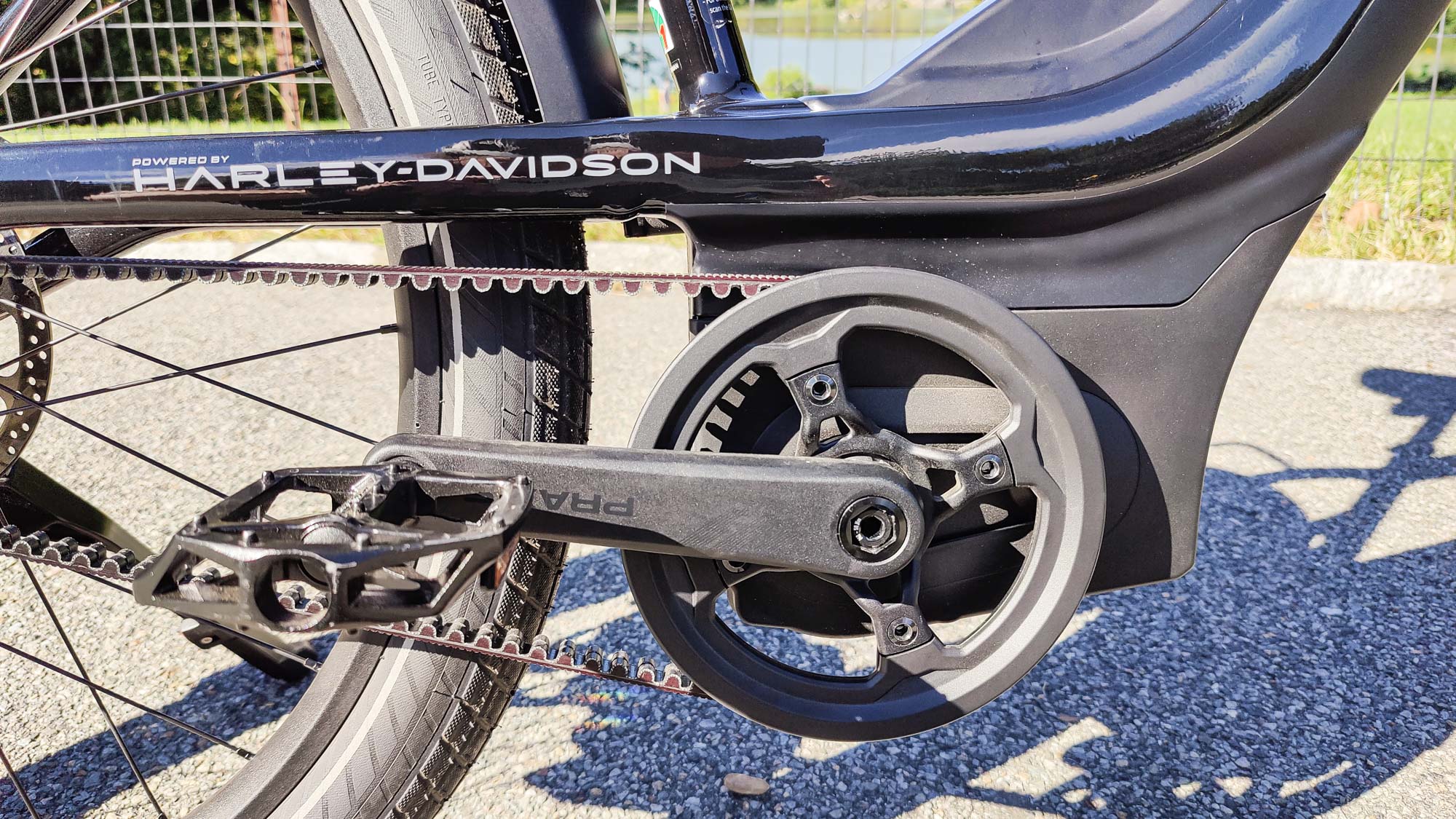
On the electronic side, the Brose controller with a 1.5-inch color TFT screen is easily legible, reporting on battery level, power assist mode, speed, headlamp status, and distance traveled.
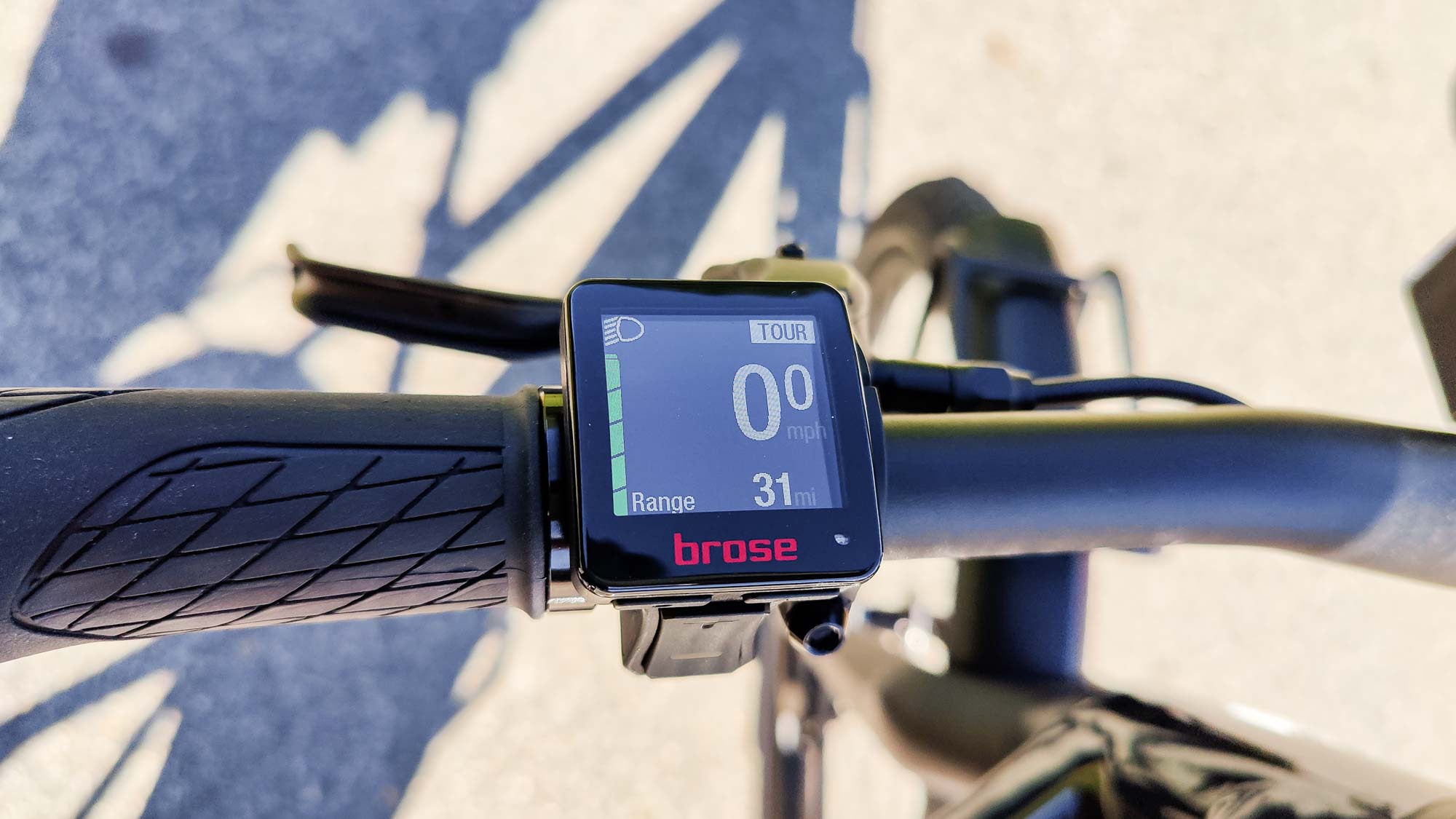
There are four ride modes: Eco, Tour, Sport, and Boost. Eco is for leisurely Sunday jaunts; Tour is for subtle assistance; Sport gives you some extra help up hills, and Boost delivers more power overall. The Rush/Cty also has a 3.5-mph push button walk mode, but we found the bike moved easily enough on its own that most people won't feel the need to use it.
Serial 1 Rush/Cty review: Battery life and range
Gauging battery life on an ebike is a matter of how much assistance you desire. The Serial 1 Rush/Cty has a 706Wh lithium-ion and is rated to deliver from 25 to 115 miles of power. On one particular day of testing in Tour mode, it registered 31 miles of range. Switching to Sport mode dropped the estimated range down to 14 miles with just 13 miles available in Boost mode. If you want to get the most range — and most work out —in Eco mode it registered 52 miles of range. You can also switch the assist off, which is not usually an option on other ebikes with pedal-only assist.
Serial 1 Rush/Cty review: Competition
Ebike competition seems limitless these days, from relatively inexpensive bikes with strapped-on batteries and rear hub electric motors, to designed-from-the-ground-up cruisers and commuters. The Serial 1 falls into the latter camp, up against the likes of the higher-end offerings from Gazelle, Cannodale, Specialized, and others.
The Gazelle Ultimate C380, which also uses a belt drive and integrated design with a mid-drive motor, is $4,249, for example. The Gazelle has a more mild-mannered personality and a smaller battery, but commuters should consider it as an option. Conversely, there's a slew of rough-and-ready streetwise models with knobbed fat tires and full-on-electric throttle controls available in the $1,600 price range. There are also commuters like the Charge City for $1,699; it lacks the panache of the Serial 1 Rush/Cty, but it's considerably less expensive.
Serial 1 Rush/Cty review: Verdict
There are plenty of ebikes to choose from today, including models from traditional bike makers like Specialized, Trek and Cannondale, as well as ebike specialists like Riese & Muller and Rad Power. That has drawn the attention of car makers and now motorcycle legend Harley-Davidson. We found the company's spin-off Serial 1 Rush/Cty to be worthy of the brand and not just another also-ran. It's a thoughtfully designed bike with convenient features commuters will appreciate — assuming they can afford the rather steep price tag.
John R. Quain has been reviewing and testing video and audio equipment for more than 20 years. For Tom's Guide, he has reviewed televisions, HDTV antennas, electric bikes, electric cars, as well as other outdoor equipment. He is currently a contributor to The New York Times and the CBS News television program.
